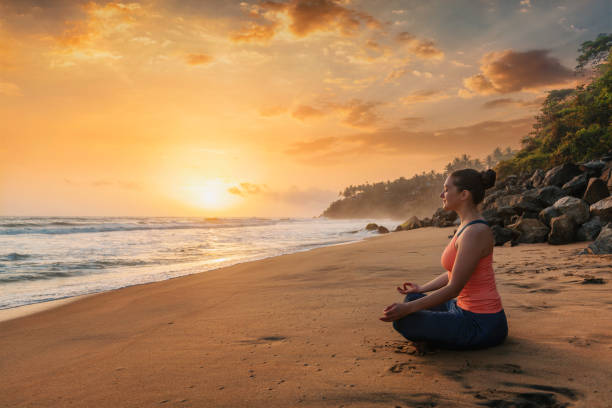In today’s fast-paced, technology-driven world, it’s more important than ever to find ways to slow down, reduce stress, and achieve greater inner peace. That’s where the practices of mindfulness and meditation come in. By learning to cultivate present-moment awareness and intentionally calming the mind, you can unlock a wealth of physical, mental, and emotional benefits that can transform your life.
But where do you begin? In this comprehensive guide, we’ll explore the foundations of mindfulness, dive into different meditation techniques, and uncover the life-changing advantages of these powerful practices. Whether you’re a complete beginner or simply looking to deepen your existing mindfulness routine, you’ll walk away with the knowledge and tools to make mindfulness and meditation a sustainable part of your daily life.
So if you’re ready to unlock your full potential and start living with more clarity, calm, and purpose, let’s dive in.
Unlock the Power of Mindfulness and Meditation
In today’s fast-paced, technology-driven world, it’s more important than ever to find ways to slow down, reduce stress, and achieve greater inner peace. That’s where the practices of mindfulness and meditation come in. By learning to cultivate present-moment awareness and intentionally calming the mind, you can unlock a wealth of physical, mental, and emotional benefits that can transform your life.

But where do you begin? In this comprehensive guide, we’ll explore the foundations of mindfulness, dive into different meditation techniques, and uncover the life-changing advantages of these powerful practices. Whether you’re a complete beginner or simply looking to deepen your existing mindfulness routine, you’ll walk away with the knowledge and tools to make mindfulness and meditation a sustainable part of your daily life.
Understanding the Foundations of Mindfulness
At its core, mindfulness is the practice of being fully present and attentive in the current moment, without judgment or distraction. Rather than dwelling on the past or worrying about the future, mindfulness encourages you to focus your awareness on the here and now.

The science behind mindfulness is quite compelling. Studies have shown that regular mindfulness practice can:
- Reduce stress, anxiety, and depression
- Improve focus, concentration, and cognitive function
- Enhance emotional regulation and overall well-being
However, there are also some common misconceptions about mindfulness that are important to address. Contrary to popular belief, mindfulness does not require you to completely “clear your mind” or achieve a state of total blissful emptiness. Instead, it’s about accepting your thoughts and feelings as they arise, without getting caught up in them.
Mindfulness has its roots in ancient Buddhist traditions, but it has since been secularized and adapted for use in a variety of modern contexts. One of the most well-known and influential proponents of mindfulness in the West was Jon Kabat-Zinn, a molecular biologist who founded the Mindfulness-Based Stress Reduction (MBSR) program at the University of Massachusetts Medical School in the late 1970s.
Kabat-Zinn defined mindfulness as “the awareness that arises from paying attention, on purpose, in the present moment and non-judgmentally.” This concise description captures the essence of what mindfulness is all about – being fully engaged with your current experience, rather than operating on autopilot or getting swept away by unhelpful thoughts and emotions.
Research has shown that regular mindfulness practice can have a profound impact on the brain. Neuroimaging studies have found that mindfulness meditation can increase gray matter density in brain regions associated with learning, memory, emotion regulation, and perspective-taking. Additionally, mindfulness has been linked to increased activity in the prefrontal cortex, which is responsible for higher-order cognitive functions like decision-making and problem-solving.
Beyond the neurological benefits, mindfulness can also positively influence our physical health. Studies have found that mindfulness-based interventions can lower blood pressure, reduce inflammation, and even improve immune function. By helping to counteract the physiological effects of chronic stress, mindfulness can enhance overall well-being and resilience.
Getting Started with a Mindfulness Practice
If the idea of practicing mindfulness sounds appealing, but you’re not sure where to begin, don’t worry – it’s simpler than you might think. Here are some easy mindfulness exercises you can try:
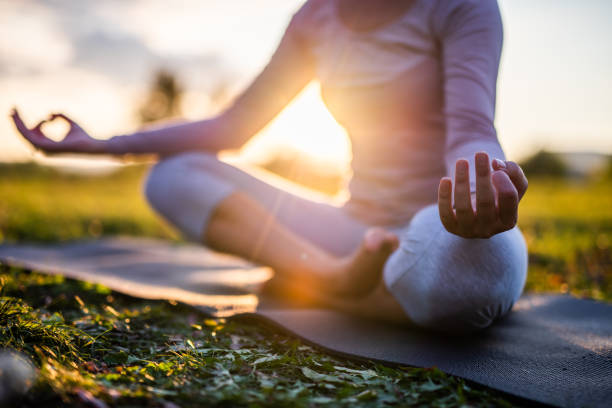
- Breath Awareness: Find a comfortable seated position, close your eyes, and simply focus your attention on the sensation of your breath moving in and out. Notice how the air feels as it enters and leaves your nostrils or belly. If your mind starts to wander, gently bring your attention back to your breathing.
- Body Scan: Slowly shift your attention to different areas of your body, noticing any sensations or tensions without judgment. Start at your toes and work your way up to the top of your head, observing each region with a curious and accepting attitude.
- Mindful Walking: As you walk, bring your full awareness to the physical sensations of each step. Feel the weight of your body, the movement of your legs, and the connection between your feet and the ground. Try to engage all of your senses, noticing the sights, sounds, and smells around you.
The key is to start small and be patient with yourself. Even just 5-10 minutes of mindfulness practice per day can have a profound impact. Over time, you can work on building a more consistent daily routine.
It’s also important to remember that mindfulness is not about “doing it right” or achieving a certain state. Instead, it’s about cultivating a compassionate, non-judgmental attitude towards your experience, no matter what arises. If your mind wanders (which it inevitably will), simply acknowledge that and gently redirect your attention back to the present moment.
Many people find it helpful to incorporate mindfulness into their daily routines by pairing it with other activities, like drinking a cup of coffee, taking a shower, or walking the dog. The key is to find ways to weave present-moment awareness into the fabric of your life, rather than viewing it as a separate, time-consuming practice.
Exploring Different Meditation Techniques
While mindfulness and meditation are closely related, they are not exactly the same thing. Meditation refers to the formal practice of training the mind, often through techniques like focused attention, open monitoring, or cultivating positive emotions.
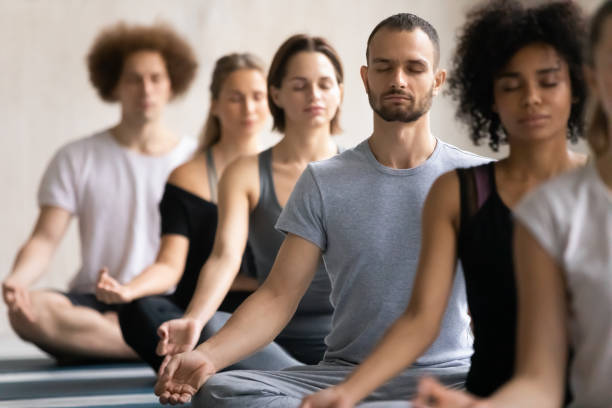
Some of the most popular meditation styles include:
- Focused Attention Meditation: This involves intentionally focusing your attention on a single object, such as your breath, a mantra, or a visual point. The goal is to maintain a steady, unwavering focus, gently redirecting your attention whenever it starts to wander.
- Open Monitoring Meditation: Instead of narrowly focusing, this style encourages you to openly observe all thoughts, feelings, and sensations that arise without getting caught up in them. The aim is to cultivate a spacious, non-reactive awareness of your internal and external experience.
- Loving-Kindness (Metta) Meditation: The goal here is to cultivate feelings of compassion, kindness, and goodwill towards yourself and others. This is often done by silently repeating phrases like “May I be happy, may I be healthy, may I be at peace.”
When starting out, it’s a good idea to experiment with different meditation techniques to see what resonates most with you and your personal goals. A guided meditation practice, whether through an app, online video, or in-person class, can also be extremely helpful, especially for beginners.
Each style of meditation has its own unique benefits. Focused attention meditation, for example, can enhance concentration and cognitive control, while open monitoring meditation has been linked to improvements in emotional regulation and well-being. Loving-kindness meditation, on the other hand, has been shown to increase positive emotions, empathy, and social connection.
Ultimately, the “best” meditation technique is the one that you enjoy and can stick with consistently. Don’t be afraid to try out a few different approaches before finding the one that feels most natural and meaningful to you.
Developing a Regular Meditation Practice
Once you’ve identified a meditation style that you enjoy, the next step is to establish a consistent practice. This can be challenging, as the mind tends to wander, and it can be easy to get discouraged.
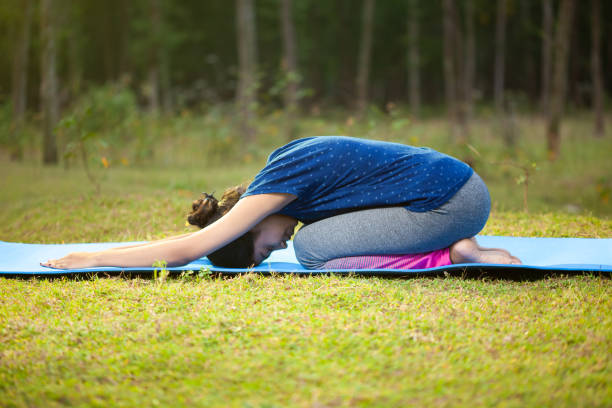
Here are some tips for developing a sustainable meditation habit:
- Start small: Commit to just 5-10 minutes per day, and gradually increase the duration as it becomes a more ingrained part of your routine. Trying to dive into a 30-minute or hour-long session right away can be overwhelming and lead to burnout.
- Find the right time: Many people find it helpful to meditate first thing in the morning or right before bed, when distractions are minimal. Experiment to see what works best for your schedule and energy levels.
- Create a dedicated space: Designate a quiet, comfortable area in your home specifically for your meditation practice. This can help signal to your brain that it’s time to shift into a more relaxed, focused state.
- Track your progress: Use a meditation app or journal to monitor your practice and observe any changes or benefits you notice over time. Seeing your consistency and improvement can be incredibly motivating.
- Be kind to yourself: Meditation is a skill like any other, and it takes time and patience to develop. If your mind wanders or you miss a session, don’t beat yourself up. Simply acknowledge it and recommit to your practice.
Consistency is key when it comes to meditation. With regular practice, you’ll start to experience the profound impacts on your focus, emotional regulation, and overall well-being. Many long-time meditators report experiencing a greater sense of calm, clarity, and inner peace in their daily lives.
That said, it’s important to remember that there is no “right” way to meditate, and your practice may evolve over time. Some days you may find it easy to stay present, while on others your mind may be more restless. The key is to approach each session with an attitude of self-compassion and curiosity, rather than judgment.
The Life-Changing Benefits of Mindfulness and Meditation
The research is clear – mindfulness and meditation can have a transformative impact on both your physical and mental health. Some of the most well-documented benefits include:

- Reduced Stress, Anxiety, and Depression: Mindfulness has been shown to activate the parasympathetic nervous system, which helps the body and mind recover from the damaging effects of chronic stress. Studies have found that mindfulness-based interventions can be just as effective as medication and psychotherapy in treating anxiety and depression.
- Improved Focus and Concentration: By training the mind to stay present and avoid distractions, mindfulness can enhance your cognitive abilities and productivity. Researchers have observed increased activity in brain regions associated with attention, as well as improved performance on tasks requiring focus and memory.
- Enhanced Emotional Regulation: Meditation practice can increase your capacity to observe and manage difficult emotions in a healthy, constructive way. Rather than getting swept away by anger, fear, or sadness, you can learn to respond with more clarity and equanimity.
- Better Physical Health: Mindfulness has been linked to a variety of positive physical health outcomes, including lower blood pressure, improved immune function, and reduced inflammation. By counteracting the physiological effects of stress, mindfulness can boost overall well-being and resilience.
But the advantages of mindfulness and meditation extend far beyond just these clinical outcomes. Many practitioners also report experiencing a greater sense of inner peace, purpose, and overall well-being in their daily lives.
One of the most remarkable aspects of mindfulness is its ability to transform our relationship with our own thoughts and emotions. Instead of getting caught up in endless cycles of rumination or worrying, we can learn to observe our mental processes with a sense of spaciousness and acceptance. This shift in perspective can free up a tremendous amount of mental and emotional energy, allowing us to show up more fully in our lives.
Mindfulness has also been shown to enhance our capacity for empathy and compassion. By cultivating a more non-judgmental, curious attitude towards our own experience, we naturally begin to extend that same kindness towards others. This can lead to deeper, more meaningful connections and a greater sense of belonging and social connection.
Ultimately, the benefits of mindfulness and meditation go far beyond just stress reduction or improved focus. These practices have the power to fundamentally shift the way we experience ourselves, our relationships, and our place in the world. By developing a greater sense of presence, acceptance, and inner peace, we can unlock our full potential and live with more purpose, fulfillment, and joy.
Integrating Mindfulness into Daily Life
While the formal practice of meditation is incredibly valuable, the true power of mindfulness lies in your ability to apply its principles to everyday activities and experiences.
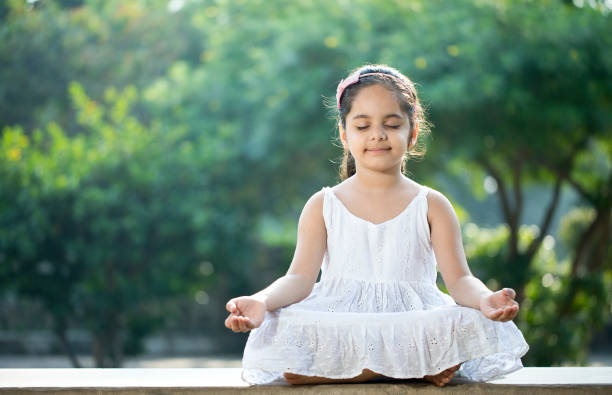
Some ways to integrate mindfulness into your daily life include:
- Mindful Eating: Slow down and savor each bite, paying attention to the flavors, textures, and sensations in your body as you nourish yourself. Notice how the food looks, smells, and feels in your mouth. Avoid distractions like TV or your phone, and try to eat in a quiet, calm environment.
- Mindful Walking: As you move through your environment, keep your senses fully engaged, noticing the sights, sounds, and sensations around you. Feel the weight of your body, the movement of your legs, and the connection between your feet and the ground. You can even try a walking meditation, where you intentionally sync your steps with your breathing.
- Mindful Work: Throughout your workday, pause periodically to take a few deep breaths and re-center your attention on the task at hand. Notice any tension or stress in your body, and consciously relax your muscles. Avoid the temptation to multitask, and instead focus your full attention on one thing at a time.
- Mindful Relationships: When interacting with others, practice deep listening and presence. Put down your phone, make eye contact, and be fully attentive to the other person’s words and emotions. Respond with empathy and compassion, rather than simply formulating your next thought.
The key is to remember that mindfulness is not just something you “do” – it’s a way of being that can infuse every aspect of your life with more presence, awareness, and appreciation. By bringing mindful attention to even the most mundane daily activities, you can cultivate a profound sense of connection, gratitude, and well-being.
Of course, integrating mindfulness into your daily life takes practice and patience. There will be times when you get caught up in distractions or find your mind wandering. When that happens, simply acknowledge it, take a few breaths, and gently redirect your attention back to the present moment. With time and persistence, mindfulness can become a natural, effortless part of your daily routine.
Frequently Asked Questions (FAQ)
Q: What is mindfulness and how does it differ from meditation?
A: Mindfulness is the practice of being fully present and attentive in the current moment, without judgment or distraction. It involves cultivating an awareness of your thoughts, feelings, and sensations as they arise, rather than getting caught up in them.
Meditation, on the other hand, refers to the formal practice of training the mind, often through techniques like focused attention, open monitoring, or cultivating positive emotions. While mindfulness and meditation are closely related, they are not exactly the same thing. Meditation is one way to develop and deepen your mindfulness practice.
Q: What are the benefits of mindfulness and meditation?
A: Extensive research has shown that regular mindfulness and meditation practice can provide a wide range of physical, mental, and emotional benefits, including:
- Reduced stress, anxiety, and depression
- Improved focus, concentration, and cognitive function
- Enhanced emotional regulation and well-being
- Lower blood pressure and inflammation
- Increased empathy and compassion
Ultimately, these practices have the power to fundamentally shift the way we experience ourselves, our relationships, and our place in the world, leading to greater inner peace, purpose, and fulfillment.
Q: How do I start a mindfulness or meditation practice?
A: The best way to start is to begin small and experiment with different techniques to see what resonates most with you. Some simple mindfulness exercises you can try include breath awareness, body scans, and mindful walking. When it comes to meditation, popular styles include focused attention, open monitoring, and loving-kindness.
The key is to start with just 5-10 minutes per day, and gradually increase the duration as it becomes a more ingrained part of your routine. It’s also helpful to create a dedicated, comfortable space for your practice and experiment with the right time of day that works best for you.
Don’t be afraid to try out guided meditations, classes, or work with a mindfulness coach if you need additional support. The most important thing is to approach your practice with patience, curiosity, and self-compassion.
Q: Where can I find resources to learn more?
A: There are countless books, apps, online courses, and in-person workshops available to support your mindfulness and meditation journey. Some recommended starting points include:
- Books: “The Power of Mindfulness” by Thich Nhat Hanh, “Wherever You Go, There You Are” by Jon Kabat-Zinn, “Meditation for Fidgety Skeptics” by Dan Harris
- Apps: Headspace, Calm, Insight Timer, Waking Up
- Online Courses: Platforms like Udemy, Coursera, and edX
- Local Workshops and Retreats: Check for mindfulness or meditation classes in your community
Additionally, you can look for local mindfulness or meditation groups, as well as consider working one-on-one with a qualified coach or teacher if you have specific goals or challenges you’d like to address.
The most important thing is to find the resources and support that resonate most with you and your personal needs. Experiment, be patient, and trust the process – the rewards of a regular mindfulness and meditation practice are truly priceless.
Finding the Right Resources and Support
If you’re ready to dive deeper into the world of mindfulness and meditation, there are countless resources available to support your journey. Some recommended starting points include:
- Books: “The Power of Mindfulness” by Thich Nhat Hanh, “Wherever You Go, There You Are” by Jon Kabat-Zinn, “Meditation for Fidgety Skeptics” by Dan Harris, and “The Mindful Twenty-Something” by Holly Rogers.
- Apps: Headspace, Calm, Insight Timer, and Waking Up by Sam Harris offer guided meditations, mindfulness exercises, and educational content for practitioners of all levels.
- Online Courses: Platforms like Udemy, Coursera, and edX host a variety of mindfulness and meditation classes led by experts in the field. These can be a great way to deepen your understanding and get personalized instruction.
- Retreats and Workshops: Immersive, multi-day mindfulness or meditation retreats can be a transformative experience, allowing you to unplug from daily distractions and dive deeper into the practices. You can also look for local workshops or classes in your community.
- One-on-One Guidance: If you’re struggling with a specific challenge or looking to take your practice to the next level, consider working with a qualified mindfulness coach or teacher. They can provide tailored support and guidance to help you achieve your goals.
You can also look for local mindfulness or meditation groups, classes, or sanghas (communities) in your area. Connecting with like-minded practitioners can be incredibly valuable, as you can learn from each other’s experiences and provide mutual support.
Ultimately, the most important thing is to find the resources and support that resonate most with you and your personal needs. With a little exploration and experimentation, you can discover the mindfulness and meditation practices that will help you live with greater clarity, calm, and well-being.
Keep in mind that your mindfulness and meditation journey is a highly individual one. What works best for your friend or colleague may not be the right fit for you. Be patient, curious, and open-minded as you navigate this path, and don’t hesitate to try out different approaches until you find what truly speaks to you.
Remember, the goal is not to become some kind of enlightened, perfectly calm being. Mindfulness is about embracing the full range of human experience – the joys and the sorrows, the triumphs and the challenges. By learning to meet each moment with presence, acceptance, and compassion, you can cultivate a richer, more fulfilling life, no matter what circumstances you’re facing.
So take that first step, whether it’s downloading a meditation app, reading a thought-provoking book, or simply pausing to take a few mindful breaths. The path of mindfulness and meditation is a lifelong one, but the rewards along the way are truly priceless.
If you have any doubts or queries, feel free to write to us. It would be a great pleasure to help you out.
